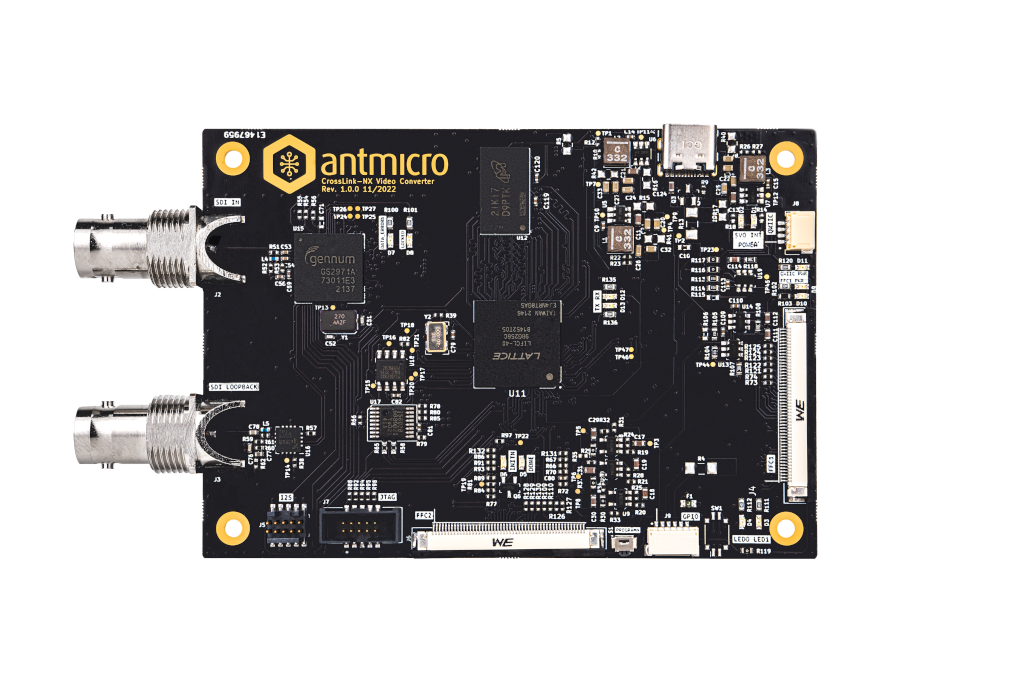Hardware setup¶
A complete setup using the SDI-MIPI Video Converter would typically consist of at least 3 devices:
SDI Video Converter - Antmicro’s SDI to MIPI CSI-2 Video Converter, responsible for deserializing SDI data and packeting it with the MIPI CSI-2 protocol,
Transmitter - a device transmitting SDI video data, connected to the SDI input port of the bridge,
Receiver - a device receiving MIPI CSI-2 video data, connected to the MIPI CSI-2 output port of the bridge.
SDI Video Converter¶
The core part of this setup is the SDI to MIPI CSI-2 Video Converter.

Figure 1 SDI to MIPI CSI-2 Video Converter board, rev. 1.0.0¶
Features¶
Integrated SDI adaptive cable equalizer and output loopback connector
Three 4-lane MIPI D-PHY transceivers at 6 Gbps per PHY exposed on two 50-pin FFC connectors
Ability to power devices from the 5V and 3.3V rails of the side FFC connector
Ability to power the board from either USB or Antmicro’s 50-pin FFC connector
Lattice Crosslink-NX FPGA for processing SDI and CSI streams
2Gbit (128Mbx16) DDR3L DRAM memory for the FPGA to support stream processing
Ability to interface and program the FPGA via the side FFC I2C bus
Architecture¶
The video converter board consists of the SDI deserializer, Lattice Crosslink-NX FPGA, and on-board DDR3L memory. The Figure 2 visualizes an architecture and data exchange between the board components.

Figure 2 SDI to MIPI CSI-2 Video Converter block diagram¶
An I2C or JTAG commands must come from outside of the board in order to program the FPGA chip.
Transmitter¶
The transmitter is a device (typically a camera) outputting data via the SDI interface. It must be compatible with the 1080p30Hz YUV422 video format.
Several input devices have been tested with SDI to MIPI CSI-2 Video Converter, e.g:
Atomos Shogun Flame,
Receiver¶
The receiver is a device that can receive data through the MIPI CSI-2 interface. The Software section of this documentation covers support for the Jetson Xavier NX board.
Antmicro provides sources for a Linux distribution configured for SDI Video Converter support for Jetson Xavier NX.